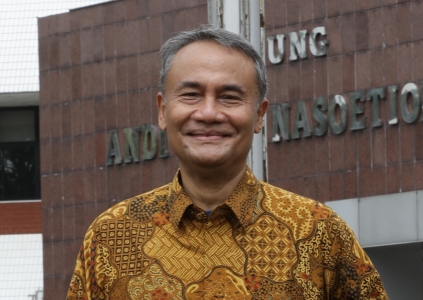Prof Harianto Introduces the Impact of Changes in the Agribusiness System on Increasing the Economic Gap between Agricultural and Non-Agricultural Households

In the Press Conference of Pre Scientific Oration of Professor held online (25/5), Professor of Agricultural Economics and Agribusiness of IPB University, Prof Harianto explained that economic development has brought changes to the structure of the economy and the structure of the agribusiness system in Indonesia. The role of the agricultural sector in contributing to gross domestic product is decreasing.
"Currently, the role of agriculture is around 13.3 percent from 24.1 percent in 1983. This phenomenon seems to be followed by structural changes in the agribusiness system which consists of three subsystems, namely, upstream, on-farm, and downstream in creating added value in the economy," he said.
However, in terms of providing labor, he continued, providing raw materials, strengthening food security, and reducing poverty, the agricultural sector and the farming agribusiness subsystem still play an important role.
"Economic development and the accompanying structural changes have widened inequality in household income and welfare. Widening inequality can lead to injustice," he said.
He said households in the lowest income bracket are finding it increasingly difficult to access economic resources that can improve their welfare. The income gap in Indonesia is still relatively high.
"Based on data presented in the World Inequality Report in 2022, the total income share of the 10 percent of the highest income group population is 48 percent of total national income. Meanwhile, the lowest 50 percent of the population only controls 12.4 percent of total national income," he said.
In 2021, the average income of the bottom 50 percent of the population is IDR 22.6 million per year and the top 10 percent of the population earns an income of IDR 285 million more per year or about 13 times.
"This inequality can be an indication that there are limitations to productive access and certain segments. Inequality can also be an indication of the concentration of economic power that has an impact on decision-making," he said.
In addition, Prof Harianto mentioned that inequality can be a cause of weakening the resilience of the economy. Speaking of inequality one would divide from perspectives such as inequality of outcomes that can be measured by income, wealth, or expenditure or inequality of opportunities that are attributed to differences in circumstances beyond an individual's control, such as gender, ethnicity, birth location, or family background.
"The bottom line is that internal and external changes in the agribusiness system can increase income or welfare inequality among actors in the agribusiness system. The income or welfare gap between agricultural households and non-agricultural households is expected to continue to widen," concluded Prof Harianto. (Ns) (IAAS/TNY)


